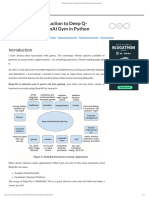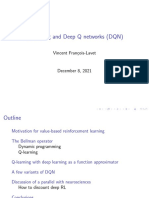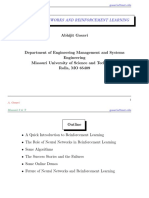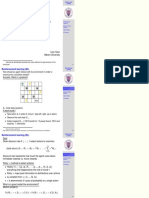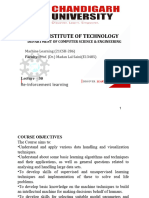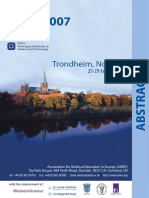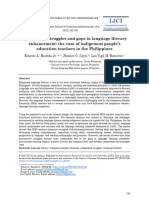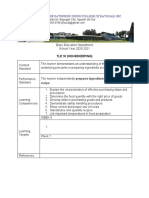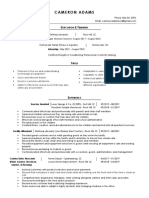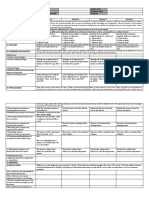0% found this document useful (0 votes)
43 views12 pagesHota ML ReinforcementLearning
The document provides an introduction to Reinforcement Learning (RL) and its applications, including gaming and robotics. It explains the formal modeling of RL using Markov Decision Processes (MDP) and details the Q-Learning algorithm for learning optimal policies. Additionally, it discusses the use of Deep Q-Learning (DQN) to handle large state and action spaces by combining Q-Learning with deep learning techniques.
Uploaded by
2024tm05030Copyright
© © All Rights Reserved
We take content rights seriously. If you suspect this is your content, claim it here.
Available Formats
Download as PDF, TXT or read online on Scribd
0% found this document useful (0 votes)
43 views12 pagesHota ML ReinforcementLearning
The document provides an introduction to Reinforcement Learning (RL) and its applications, including gaming and robotics. It explains the formal modeling of RL using Markov Decision Processes (MDP) and details the Q-Learning algorithm for learning optimal policies. Additionally, it discusses the use of Deep Q-Learning (DQN) to handle large state and action spaces by combining Q-Learning with deep learning techniques.
Uploaded by
2024tm05030Copyright
© © All Rights Reserved
We take content rights seriously. If you suspect this is your content, claim it here.
Available Formats
Download as PDF, TXT or read online on Scribd
/ 12
